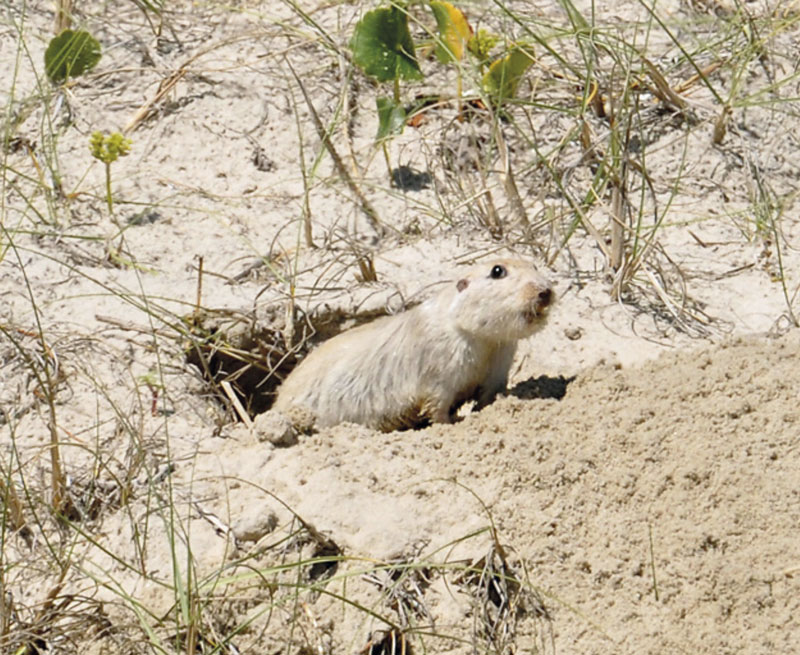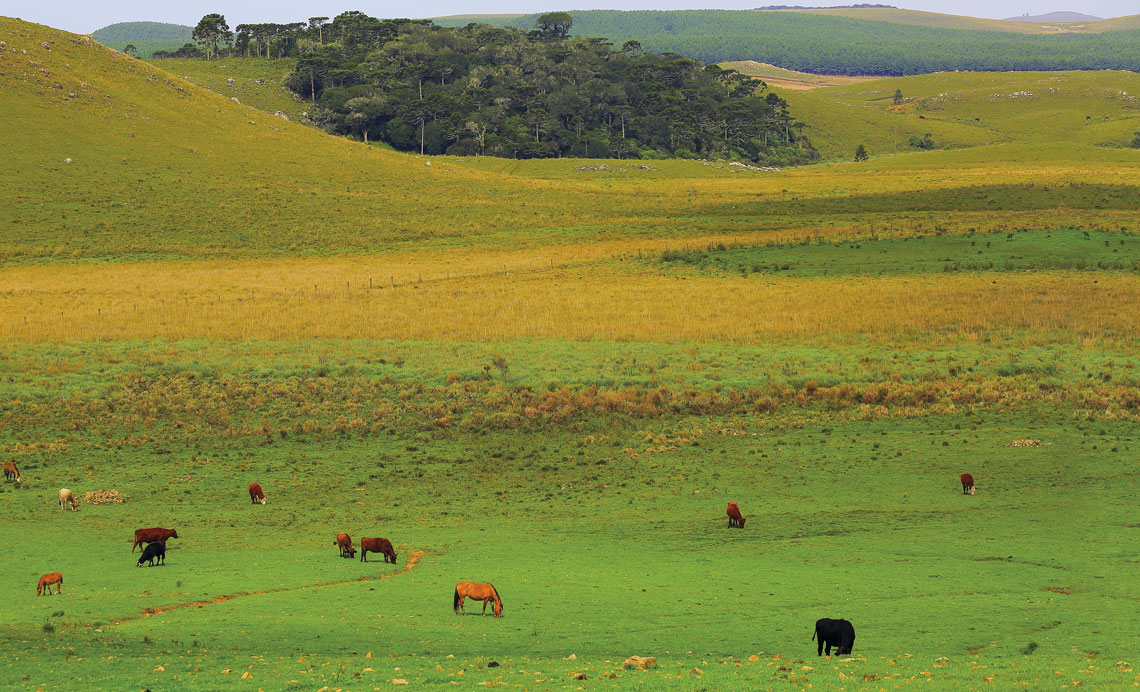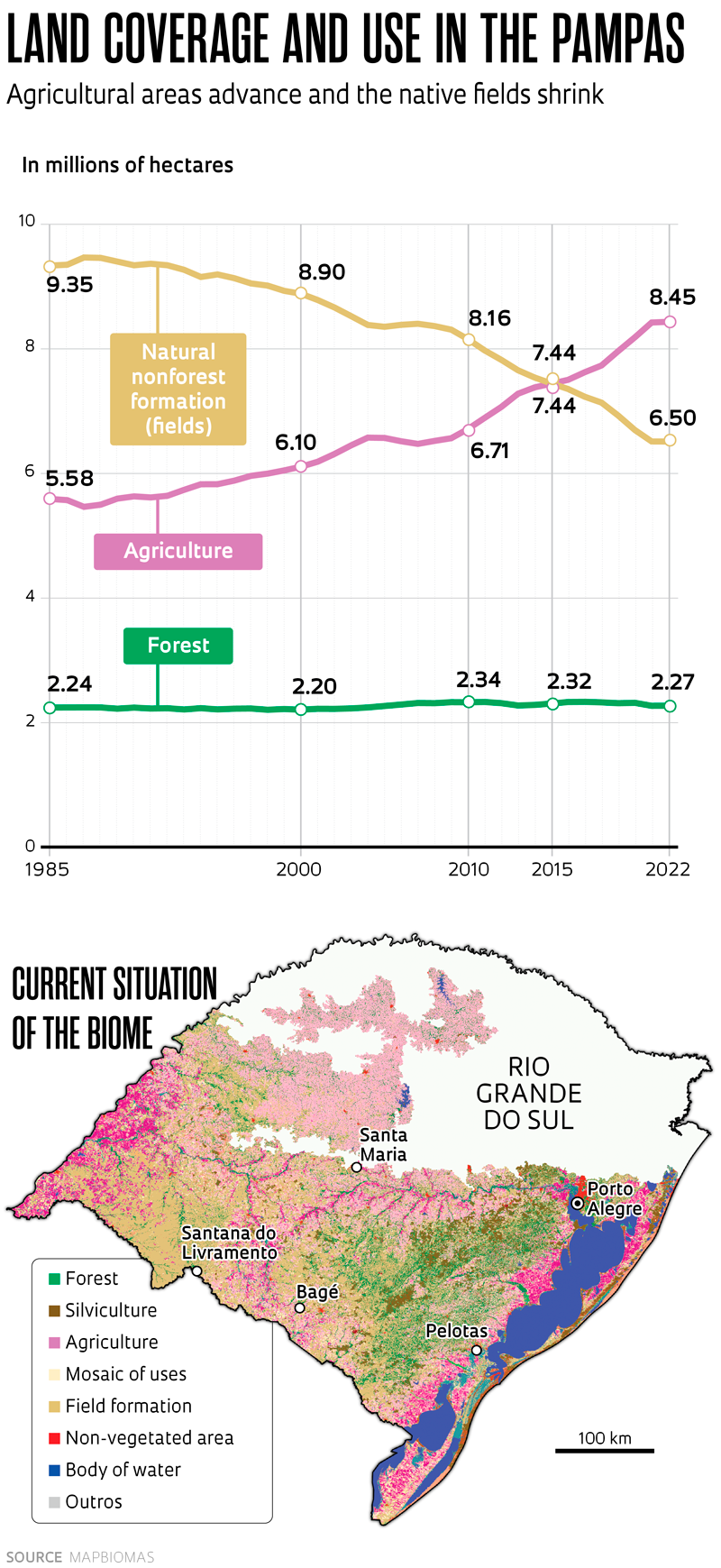The second smallest biome in Brazil, with an area larger than only the Pantanal, the Pampas has lost 30% of its native vegetation in the past three and a half decades. The rural regions are the most affected and have ceded their territory mainly to agricultural activity. According to experts, the damage resulting from the suppression of these areas may not be as immediately visible as in the case of the forests, but it is still devastating regardless.
Recent data from the MapBiomas network—a collaborative research network formed by nongovernmental organizations (NGOs), universities, and technology startups—confirms the substantial loss of nonforested regions (fields) in the Pampas: in 1985, these areas occupied 9.3 million hectares (ha), around half of the total area of the biome. In 2022, they had fallen to 6.5 million ha. On the other hand, agriculture increased in practically the same proportion: between 1985 and 2022, the area occupied by the activity went from 5.6 to 8.4 million ha. In the case of the forested areas, there was a slight increase, going from 2.2 million ha in 1985 to 2.3 million ha in 2022.
Biologist Mateus Pires observes that not much is said about the Pampas, a “recently” created biome in official terms. “In 2024, it will mark 20 years since the IBGE [Brazilian Institute of Geography and Statistics] raised the category of the Pampas to a biome,” says Pires who is currently on a postdoctoral fellowship in the Laboratory of Ecology and Evolution of the University of Vale do Taquari (UNIVATES), in Lajeado, Rio Grande do Sul.
The biome is only actually recent on paper. “The Pampas is older than the Atlantic Forest. It is testimony to a period, around 40,000 to 20,000 years ago, in which the climate was colder than in the current Holocene,” explains Heinrich Hasenack, coordinator of the Graduate Program in Agribusiness at the Federal University of Rio Grande do Sul (UFRGS).
Around 11,000 years ago, with the start of the Holocene, the Earth began to get warmer and more humid. This favored the expansion of forests. Those which are today known as the Atlantic Forest expanded across the fields of the Pampas, going from the lowest to the highest parts. “The fields of today are reminiscent of ancient areas that had not been occupied by forests,” says Hasenack.
The biome covers over half of the state of Rio Grande do Sul, and spreads across Argentina and Uruguay, filling the Brazilian imagination as vast expanses of field inhabited by gauchos—figures linked to the southern border that mix Iberian and Indigenous cultures. The Pampas is closely associated with the appreciation of the region’s cultural identity. The maintenance of the landscape moves the culture and the economy of many municipalities in the state of Rio Grande do Sul. “The contemplation of the landscapes and tourism in farm hotels are important economic activities, but, if the fields were converted into plantations, we would no longer have access to that,” says Pires. Biologist Sandra Müller, coordinator of the Plant Ecology Laboratory of UFRGS, has the same opinion: “What would become of the gaucho without the Pampas?”
The entire system is much more complex than it appears—it is more than a set of fields with grass as far as the eye can see. “In a single square meter of ground an average of 30 different species of grasses and herbaceous plants are found. One record identified 56 plants in one square meter. There is an extremely high diversity of vegetation, even though the physiognomy doesn’t change much in the field regions,” observes Müller.
Besides the areas of field, the biome has other types of vegetation that group together in different regions. According to Pires, the simplest form of classification divides the Pampas into three main parts: lowlands with short plants, adapted to wet and sandy areas close to the coast; shrubby vegetation adapted to the cold and humid climate of the mountains; and low grasses and shrubs in the fields to the west of Rio Grande do Sul, as a result of a dry climate and the moisture stress caused by a more spaced-out rainfall pattern.
According to Müller, there are studies that divide the biome into up to 10 distinct regions. For conservation purposes, this refinement is especially important for looking more carefully at the species of fauna and flora and considering their specific management needs.
“Over 3,000 herbaceous species have been identified throughout the biome,” remembers Hasenack. He observes that for a subtropical zone, which is not normally as diverse as tropical regions, such diversity is impressive.
The natural fields, probably the most characteristic portion of the Pampas, plays a crucial role in terms of ecosystem services. Pires explains that these areas serve as a provision for livestock, as they offer high quality forage for cattle. “Oxen raised in natural pastures gain weight and provide financial return more quickly than those fattened in converted fields that use exotic pastures [with grasses that are not typical of the region],” says the researcher.
The Pampas provides natural forage at the same time as it maintains the typical plant diversity and the structure necessary for the development of a variety of native plant species, observes Müller. “It is something that the other biomes do not offer.” The researcher explains that grasses with C3 and C4 metabolisms grow in the Pampas. “The C3 ones are more palatable, less tough, and they add value to the supply of forage. They are thinner and more productive fields in the winter,” he comments.
The loss of the nonforested areas worries the researchers. According to MapBiomas, agricultural land use reached 2.1 million hectares between 1985 and 2022. In the same period, silviculture, essentially planted pine and eucalyptus forests, increased by an impressive 1,667%, or by more than 720,000 hectares. “It really worries me because the loss of habitat favors the disappearance of species of fauna with very restricted distribution,” states Müller. Varieties of emus, cats, reptiles, open field birds, and mammals, such as the tuco-tuco of the dunes (Ctenomys flamarioni)—a rodent threatened with extinction that lives in galleries below the ground—suffer from the pressure of agricultural expansion and silviculture in the biome.
“Soybean is advancing from the north to south of the Pampas and silviculture from the east to the west,” explains Hasenack. “Many areas currently occupied by soybean are less suitable for this crop, which demands much more careful management and, furthermore, runs the risk of obtaining lower returns,” says Hasenack.

Cláudio Dias Timm / Wikimedia Commons The tuco-tuco (Ctenomys flamarioni), which is threatened from extinction and inhabits coastal dunes in the Pampas biomeCláudio Dias Timm / Wikimedia Commons
Soybean has been expanding even on the area traditionally occupied by rice paddies, which adapt better to the conditions of the biome, where there are many flooded parts. “Rice has lost space for not being a commodity,” comments Hasenack.
Rio Grande do Sul is the largest rice producing state in Brazil. According to the IBGE, the state recorded an average annual production of almost 8 million tons between 2020 and 2022. In 2021, Brazil, the largest producer in the Americas, produced 11.6 million tons of rice. According to EMBRAPA, rice production on highlands, or on natural floodplains, plummeted from 1.6 million tons in 2013 to 0.7 million tons in 2022. Planting rice on floodplains today represents such a small fraction of the national production that EMBRAPA has stopped counting it since 2018.
The use of fertilizers and pesticides is less intensive in rice cultivation than on soybean plantations. These chemical products pollute the water table. “Additionally, the wet areas of Rio Grande do Sul are large carbon sequesters. With fewer flooded stretches, the biome’s capacity to retain greenhouse gases has reduced,” ponders Pires. Like the vegetation of the fields, the areas of floodplains help to remove carbon dioxide from the atmosphere.
Conservation of the nonforested areas of the Pampas is also important for another reason. A stretch of the Guarani aquifer passes below the biome, one of the main known sources of underground water in Brazil. “The native vegetation plays an important role in the maintenance of underground water stocks,” highlights Müller.
According to experts on the biome, the problem is not just the advance of agricultural production in the Pampas, but the growth of areas occupied by cultures that degrade the environment. Instead of monoculture, they suggest that it could be better for the region to promote a mixture of different crops in order to not degrade the soil as much and keep it productive for longer.
“Grapevines, for example, coexist with raising sheep and will never have the size of a soybean plantation. They form small parcels, a mosaic that will not conflict in such an aggressive manner with the biome. It is not necessary to remove all the vegetation from the fields where the grapes are planted,” explains Hasenack. The logic is also interesting from a touristic point of view, as already occurs in the Serra Gaúcha, where many vineyards take advantage of tourism linked to the regional landscape.
Unlike what happens in other biomes, in which forested areas are cut down to become pasture for cattle, the Pampas has an ally in cattle farming for its maintenance. Its native fields, which have provided space for soybeans, are natural pastures.
For Hasenack, the main conservation agent of the Pampas should be the rural producer, to whom more incentives should be provided to raise cattle on natural pastures. “In Uruguay, which has the same breeds of cattle as Rio Grande do Sul, beef cattle in natural fields is highly valued,” he comments.
Conservation is important because the restoration of the Pampas would be much more difficult. “We don’t have native grass seeds in nurseries and we are losing the opportunity to discover species that could even be commercialized,” warns Müller. “It would not be easy to restore the fields that are being converted into pine forests, an exotic and very aggressive species.” Unlike deforestation in the Amazon, which implies cutting down trees and frequently makes the news, the suppression of natural fields in the Pampas is still not seen as an environmental drama.
Republish

